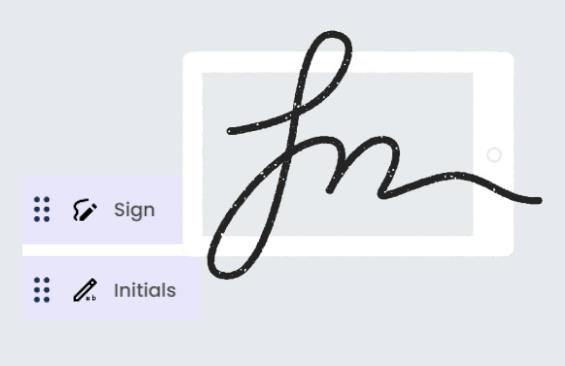Legal protection is an essential part of doing business in the United States. From contract disputes to liability claims, understanding how to minimize risk is critical. One such tool used by professionals, businesses, and individuals is the Hold Harmless Agreement. This document helps clarify who assumes responsibility if things go wrong.
In this post, we’ll explain what a Hold Harmless Agreement is, how it works, when it’s used, and how it compares to other legal tools such as Non-Disclosure Agreements. Whether you’re a contractor, service provider, or small business owner, this guide will help you understand the value of Hold Harmless Agreements-clearly and simply.
1. What Is a Hold Harmless Agreement?
A Hold Harmless Agreement is a legal contract where one party agrees not to hold the other responsible for certain damages or legal liabilities. It’s often used to transfer risk from one party to another.
For example, if a homeowner hires a contractor to perform work on their property, the homeowner might be asked to sign a Hold Harmless Agreement. This would protect the contractor from liability if someone gets injured on the job site.
Just like Non-Disclosure Agreements, which protect confidential information from being shared, Hold Harmless Agreements are about protecting parties—but from lawsuits and liabilities rather than from information leaks.
2. Types of Hold Harmless Agreements
Hold Harmless Agreements come in several forms, each offering different levels of legal protection depending on the situation and the amount of risk involved. Understanding the differences between these types is essential for selecting the right one for your business or personal needs. Just as Non-Disclosure Agreements can be structured to be either mutual or one-sided based on the sensitivity and direction of the information being shared, Hold Harmless Agreements are customizable to define who takes responsibility for potential legal claims.
a. General Hold Harmless Agreement
The General Hold Harmless Agreement offers the broadest and most comprehensive form of protection. In this agreement, one party agrees to assume all legal responsibility—even if the harm or loss was caused in part or entirely by the party being protected. In other words, the person signing the agreement promises not to hold the other party liable under any circumstances, regardless of fault.
This type of agreement is often used in high-risk industries like construction, where subcontractors might agree not to sue the general contractor for any injuries or damages. However, it’s important to note that some states in the U.S. may limit or refuse to enforce such broad agreements, especially if they attempt to cover gross negligence or intentional misconduct.
Just like overly aggressive Non-Disclosure Agreements that attempt to restrict the disclosure of even public information, an overly broad General Hold Harmless Agreement can backfire if it’s seen as unfair or unreasonable in court.
b. Limited Hold Harmless Agreement
The Limited Hold Harmless Agreement is more narrowly focused and only applies in certain situations—usually when both parties share some responsibility. Under this structure, the person signing the agreement agrees to hold the other party harmless only for specific types of claims or damages, and not for incidents where the indemnitee (the protected party) is solely or grossly at fault.
This version is particularly useful when the parties want to outline clear limits on liability. For example, a yoga studio might ask its students to sign a Limited Hold Harmless Agreement that releases the studio from claims related to ordinary injury during class, but still holds the studio accountable if faulty equipment causes harm.
This approach mirrors one-sided Non-Disclosure Agreements, where only one party is obligated to keep information confidential, offering protection that is strong but not all-encompassing. Limited Hold Harmless Agreements are often seen as more balanced and are more likely to be enforced by courts.
c. Intermediate Hold Harmless Agreement
An Intermediate Hold Harmless Agreement falls somewhere between the general and limited forms. In this type, the indemnifying party agrees to hold the other party harmless unless the damage or injury is caused entirely—and solely—by the indemnitee. This means that if both parties are at fault, or if a third party contributes to the problem, the agreement still applies. However, if the indemnitee is 100% responsible for the loss, the indemnity protection no longer applies.
This type of agreement is commonly used in vendor contracts, partnership deals, or service agreements where some level of shared risk is expected, but neither party wants to take full blame for situations beyond their control. It ensures that liability is only avoided when it is reasonable to do so.
The logic is similar to mutual Non-Disclosure Agreements, where both parties agree to protect each other’s confidential information because both sides have something valuable at stake. The Intermediate Hold Harmless Agreement reflects a fair, cooperative balance where both sides acknowledge shared responsibilities.
In summary, understanding these three types of Hold Harmless Agreements-General, Limited, and Intermediate—can help you choose the right level of protection for your situation. Whether you’re organizing an event, hiring a contractor, or offering a service, selecting the appropriate structure ensures you aren’t left exposed to legal or financial risk. As with Non-Disclosure Agreements, the key is in the details—being specific, reasonable, and clear about the obligations of each party.
3. Key Elements of a Hold Harmless Agreement
While Hold Harmless Agreements may vary by industry or situation, they generally include:
- Parties Involved: Who is providing and who is receiving the protection.
- Scope of Liability: What types of claims or damages are covered.
- Duration: How long the agreement is in effect.
- Jurisdiction: Which state’s laws will apply.
You might notice similarities here with Non-Disclosure Agreements, which also require clear terms, including scope, parties, and enforceability clauses.
4. When Should You Use a Hold Harmless Agreement?
Here are common situations where a Hold Harmless Agreement is recommended:
- Construction Projects: Contractors often use these to avoid liability for injuries on a job site.
- Event Planning: Venues may ask clients to hold them harmless for property damage or guest injuries.
- Leases: Landlords might include these agreements in leases to avoid liability for tenant activities.
- Service Contracts: Freelancers or consultants may use Hold Harmless Agreements to prevent legal issues.
In contrast, Non-Disclosure Agreements are more relevant when sensitive business information is being shared-like in a merger or a partnership.
5. How a Hold Harmless Agreement Differs from Similar Legal Tools
It’s easy to confuse Hold Harmless Agreements with similar legal instruments, especially Non-Disclosure Agreements or Indemnity Clauses. Let’s compare:
| Legal Tool | Purpose | Common Use |
| Hold Harmless Agreement | Prevents one party from suing another | Liability protection |
| Non-Disclosure Agreement | Prevents information from being shared | Confidentiality |
| Indemnity Clause | One party compensates another for losses | Financial risk |
Each serves a different purpose but can be used together in comprehensive contracts. Many companies include both Non-Disclosure Agreements and Hold Harmless Agreements in master service agreements.
6. Legal Enforceability of Hold Harmless Agreements
In the United States, the enforceability of a Hold Harmless Agreement varies by state. Courts generally enforce these agreements if:
- The language is clear and unambiguous
- Both parties understand the risks involved
- The agreement does not violate public policy
In some states like California, courts scrutinize Hold Harmless Agreements carefully, especially when the release of liability involves negligence.
The same scrutiny applies to Non-Disclosure Agreements, which must be reasonable in scope and duration to be enforceable.
7. How to Draft a Hold Harmless Agreement
Drafting a solid Hold Harmless Agreement doesn’t require a legal degree, but it does demand clarity, precision, and careful thought. A poorly written agreement can leave you exposed to legal risks, while a well-drafted one can offer meaningful protection. Much like Non-Disclosure Agreements, which must define key terms and boundaries to be enforceable, a Hold Harmless Agreement should leave no room for interpretation.
Here’s a straightforward, step-by-step approach to creating one:
Step 1: Identify the Parties
Start by clearly stating the full legal names of the parties involved. The party agreeing to assume responsibility is called the indemnitor, and the party being protected is known as the indemnitee. Including their business names, contact information, and titles (if applicable) ensures clarity and prevents disputes about who is responsible for what.
Step 2: Define the Scope
This is one of the most important parts of the agreement. Specify what types of risks or liabilities the indemnitor is protecting the indemnitee from. Is it physical injury, property damage, legal costs, or third-party claims? Be as specific as possible. Avoid vague language like “any and all damages,” which may not hold up in court. The clearer your definitions, the stronger your agreement will be—just as precise definitions are crucial in Non-Disclosure Agreements to clarify what constitutes “confidential information.”
Step 3: State the Duration
Next, you’ll need to include a time frame for how long the agreement will remain in effect. This could be a fixed date, the length of a project or service, or until a certain event occurs (like the return of rented equipment). Defining the duration prevents future misunderstandings and ensures both parties know when the protection begins and ends. This mirrors the way Non-Disclosure Agreements often include a specific term for confidentiality, such as two or three years from the date of signing.
Step 4: Choose Governing Law
Include a clause that identifies which state’s laws will govern the agreement. This is critical because different states interpret liability and indemnification differently. By clearly stating the governing jurisdiction, you minimize confusion and ensure legal disputes—if they arise—will be handled under familiar legal rules. Similarly, Non-Disclosure Agreements often contain jurisdiction clauses to specify where disputes should be resolved.
Generate Your Electronic Signature Instantly
Make your Electronic Signature in minutes using Legitt AI.
Try Making Your Signature
Step 5: Add Signatures
Finally, both parties must sign and date the agreement for it to be valid. Without signatures, the agreement may not be legally enforceable. Depending on the situation, it may also be helpful to include a witness or notary acknowledgment, especially for higher-risk activities or significant business relationships.
Creating a Hold Harmless Agreement is about more than filling in blanks—it’s about protecting your interests through clear communication. When properly structured, these agreements reduce legal exposure, clarify expectations, and help build trust. And much like Non-Disclosure Agreements, they work best when both parties understand exactly what’s being agreed to and why.
8. Common Mistakes to Avoid
A poorly written Hold Harmless Agreement can backfire. Here are some common pitfalls:
- Vague language: Don’t use general terms like “any harm.” Be specific.
- Unreasonable expectations: Trying to shift all liability, even for gross negligence, is usually unenforceable.
- Lack of legal review: Always consult a lawyer for customized agreements.
Likewise, mistakes in Non-Disclosure Agreements, such as unclear definitions or overreaching terms, can render them useless in court.
9. Digital Tools to Help You Draft Legal Agreements
Today, tools like Legitt AI make drafting legal agreements—including Hold Harmless Agreements and Non-Disclosure Agreements—faster, safer, and more accurate.
These platforms typically offer:
- AI-generated clauses tailored to your industry
- Secure digital signature capabilities
- Audit trails for legal compliance
Whether you’re managing liability or protecting trade secrets, digital legal tools are now essential for modern business operations.
10. Hold Harmless Agreements in Real-World Use
Let’s explore a few practical examples:
- Freelance Photographer: Uses a Hold Harmless Agreement when shooting at a client’s private property to protect against injury claims.
- Fitness Trainer: Asks clients to sign one before participating in training sessions.
- Software Vendor: Includes a Hold Harmless clause in service contracts, along with Non-Disclosure Agreements to protect proprietary code.
Understanding how these agreements are applied can help you decide when to use them—and when to use NDAs instead.

Create Hold Harmless Agreement with Legitt AI
Instantly draft a precise Hold Harmless Agreement using Legitt AI. Secure your sensitive data with ease.
Get Started FreeConclusion
A Hold Harmless Agreement is a powerful legal tool that helps protect your business or personal interests from unnecessary liability. When written clearly and used appropriately, it can shield you from lawsuits, court costs, and financial loss. As you build business relationships—whether in construction, consulting, or service delivery—consider including both Hold Harmless and Non-Disclosure Agreements in your contracts for complete protection.
By understanding the fundamentals of each document, you’ll be better equipped to navigate the legal landscape and keep your operations secure. Use tools like Legitt AI to simplify the process, and always review legal documents carefully before signing.
Did you find this article worthwhile? More engaging blogs and products about smart contracts on the blockchain, contract management software, and electronic signatures can be found in the Legitt AI. You may also contact Legitt to hire the best contract lifecycle management services and solutions, along with free contract templates.
FAQs on Hold Harmless Agreement
What is a Hold Harmless Agreement?
A Hold Harmless Agreement is a legal contract in which one party agrees not to hold the other responsible for liability, damages, or losses that may arise during an activity or service.
When is a Hold Harmless Agreement used?
Hold Harmless Agreements are commonly used in construction, event planning, rentals, fitness training, and service contracts to shift legal responsibility from one party to another.
Is a Hold Harmless Agreement legally binding?
Yes, a properly drafted Hold Harmless Agreement is legally binding in most U.S. states, as long as it is clear, specific, and doesn’t violate public policy or laws.
What is the difference between a Hold Harmless Agreement and a Non-Disclosure Agreement?
A Hold Harmless Agreement protects against legal liability, while a Non-Disclosure Agreement (NDA) protects confidential information from being shared or misused.
Do both parties need to sign a Hold Harmless Agreement?
Yes, both parties must review, understand, and sign the agreement for it to be enforceable in court.
Can a Hold Harmless Agreement cover negligence?
Some Hold Harmless Agreements include negligence, but courts may not enforce them if they attempt to waive responsibility for gross negligence or intentional harm.
What should be included in a Hold Harmless Agreement?
A valid Hold Harmless Agreement should include the parties involved, a description of activities, scope of protection, duration, and applicable state law.
Are Hold Harmless Agreements enforceable in all states?
While enforceable in most U.S. states, some states like California limit the enforceability of these agreements, especially if they attempt to cover all liability without limits.
Can I use a Hold Harmless clause in a Non-Disclosure Agreement?
Yes, you can include a Hold Harmless clause in an NDA or broader contract, especially when both confidentiality and liability protection are needed.
How do I create a Hold Harmless Agreement?
You can create one by identifying the parties, defining liability terms, stating the effective period, and including a choice of law clause. Tools like Legitt AI can help you generate legally sound agreements quickly.
